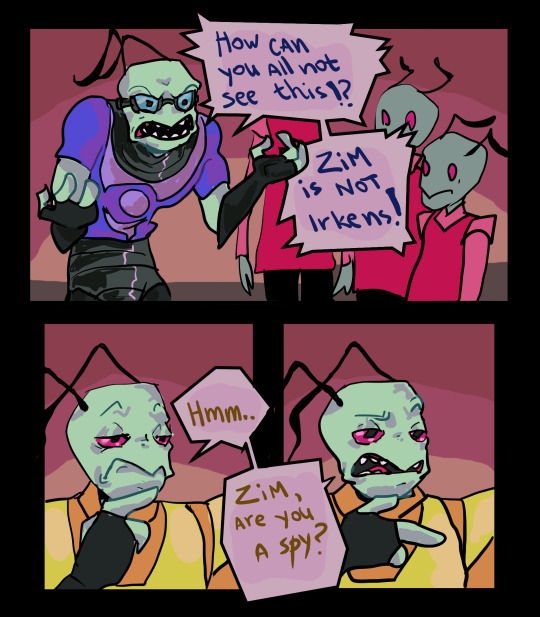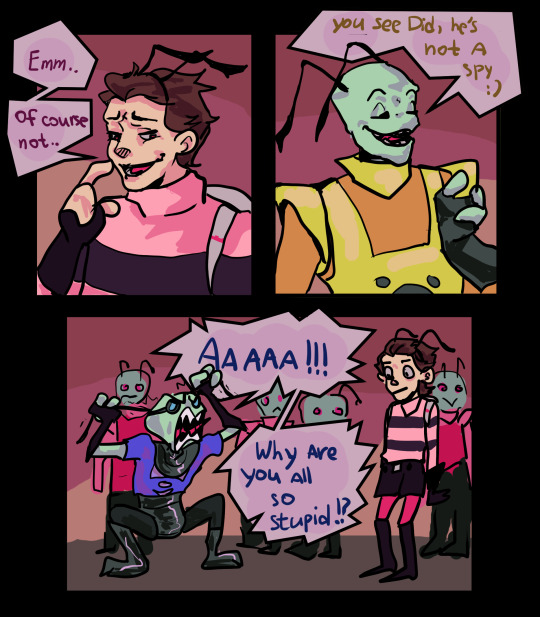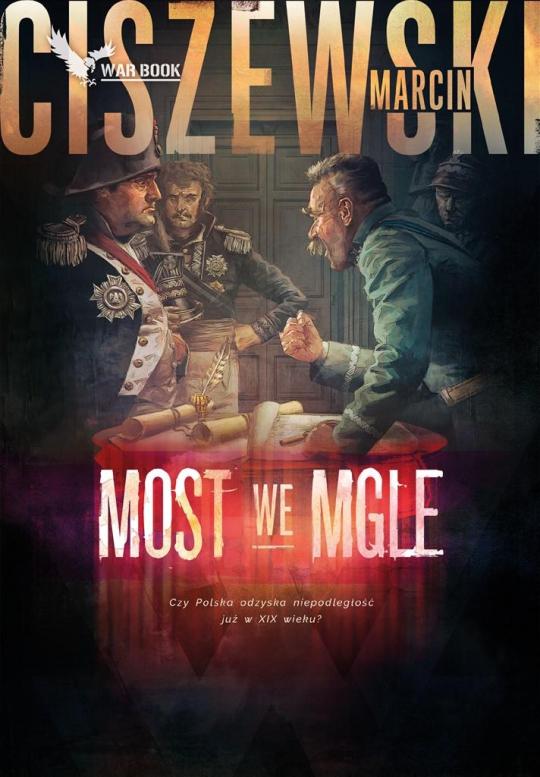#Alternative history
Text



The plot is as follows, Zim is a human spy who works for the "human coalition", they learned about Irken technology and sent Zim to join their team and steal their technology to conquer the universe.
Invader Dib, the only one who understands that zim is not an Irken and tries to stop him
#invader zim#invader zim fanart#zim#human zim#art#Gir dog#iz zim#iz gir#iz dib#alternative history#iz#digital#humanization
851 notes
·
View notes
Text
Naomi Novik's incredible, brilliant, stupendous "Temeraire" series

One of the finest pleasures in life is to discover a complete series of novels as an adult, to devour them right through to the end, and to arrive at that ending to discover that, while you’d have happily inhabited the author’s world for many more volumes, you are eminently satisfied with the series’ conclusion.
I just had this experience and I am still basking in the warm glow of having had such a thoroughly fulfilling imaginary demi-life for half a year. I’m speaking of the nine volumes in Naomi Novik’s Temeraire series, which reimagines the Napoleonic Wars in a world that humans share with enormous, powerful, intelligent dragons.
https://www.naominovik.com/temeraire/
If you are like me, this may not sound like your kind of thing, but please, read on! Novik is a gifted, brilliant storyteller, and even if you, like me, had never read a tale of naval or aerial battles that didn’t bore you to tears, you should absolutely read these books, because I have never been so gripped by action sequences as I was by Novik’s massive military set-pieces.
Likewise, if you’re not a fan of dragon fiction — I’m not, though I do enjoy some heroic fantasy — or talking animal stories (ditto), you owe it to yourself to read these books! Novik’s dragons straddle the line between fantasy and sf, with decidedly nonmagical, bioscience- and physics-grounded characteristics. In the hands of a lesser writer, this can be deadly, yielding an imaginary creature that is neither fantastic nor believable.
But Novik’s deft handling of her dragons — variegated in biological characteristics, sociological arrangements, and umwelt — renders them as creatures both majestic and relatable, decidedly inhuman in outlook but also intensely likeable characters that you root for (or facepalm over, or sometimes both — a delicious sweet-sour cocktail of emotions!).
Finally, if you’re not a fan of historical fiction — again, as I am not! — you should absolutely get these books. Novik is an exhaustive researcher with a gift for rendering the people and circumstances of the past simultaneously comprehensible and unmistakably different, making the past “a different country” indeed, but nevertheless a place whose contours can be firmly grasped and inhabited.
In other words, Novik has written a work of historical-military fiction with dragons in it that I enjoyed, despite having almost no interest in historical fiction, military fiction, or high fantasy. She did this by means of the simple trick of being consistently and variously brilliant in her execution.
First, she is brilliant in the themes that run through these nine volumes: the themes of honor, duty and love, and the impossible dilemmas that arise from trying to be true to yourself and others. Captain William Laurence — the sea captain who finds himself abruptly moved into the dragon corps — is a profoundly honorable man, bound by the strictest of mores. Nominally, Laurence’s moral code is shared by his fellow gentlemen and officers, but where most of the world — all the way up to the Lords of the Admiralty — pays lip service to this code, Laurence truly believes in it.
But there is something of Godel’s Incompleteness in Laurence’s Georgian morality, in that to be completely true to his ethics, Laurence must — again and again, in ways large and small — also violate his ethics, often with the most extreme consequences imaginable at stake. Novik spends nine volumes destruction-testing Laurence’s morality, in a series of hypotheticals of the sort that you could easily spend years arguing over in a philosophy of ethics seminar — but these aren’t dry academic questions, they’re the stuff of fabulous adventure, great battles, hair’s-breadth escapes, and daring rescues.
Next, there is Novik’s historicalness, which is broad, deep, and also brilliantly speculative. Novik has painstakingly researched the historical circumstances of all parts of Napoleonic Europe, but also the Inca empire, colonial Africa, settler Australia, late-Qing China, and Meiji Japan.
It would be one thing if Novik merely brought these places and times to life with perfect verisimilitude, but Novik goes further. She has reimagined how all of these societies would have developed in the presence of massive, powerful, intelligent dragons — how their power structures would relate to dragons, and how the dragons would have related to colonial conquest.
The result is both a stage that is set for a Napoleonic War that is recognizable but utterly transformed, a set of social and strategic speculations that would make for a brilliant West Point grad seminar or tabletop military strategy game or an anticolonial retelling of imperial conquest, but is, instead, the backdrop for nine exciting, world-spanning novels.
Next, there’s Novik’s action staging. I have the world’s worst sense of direction and geometry. I can stay in a hotel for a week and still get lost every time I try to find my room. I can’t read maps. I can’t visualize 3D objects or solve jigsaw puzzles. Hell, I can barely see. Nevertheless, I was able to follow every twist and turn of Novik’s intricate naval/aerial/infantry battles, often with casts of thousands. Not just follow them! I was utterly captivated by them.
Next, there’s Novik’s ability to juggle her characters. While these novels follow two main characters — William Laurence and the dragon Temeraire — they are joined by hundreds of other named characters, from Chinese emperors to the Sapa Inca to Wellington to Napoleon, to say nothing of the dragons, the sea captains, the Japanese lords, the drunken sailors, the brave midshipmen, and so on and so on. Each one of these people is distinct, sharply drawn, necessary to the tale, and strongly individuated. I am in awe (and not a little jealous). Wow. Just wow.
Finally, there’s Novik’s language: the tale is told primarily through Laurence’s point of view, which is rendered in mannered, early 19th century English. Again, this is the kind of thing I usually find either difficult or irritatingly precious or both — but again, it turns out that I just hadn’t read anyone who was really good at this sort of thing. Novik is really, really good at it.
At the end of one summer, years ago, I ran into Vernor Vinge at a conference and asked him how he was doing. He lit up and told me he’d just had one of the best summers of his adult life, because he’d started it by reading the first Terry Pratchett Discworld novel, and had discovered, stretching before him, dozens more in the series. It was an experience he hadn’t enjoyed since he was a boy, discovering the writers that preceded him.
As I read the Temeraire books, I kept returning to that conversation with Vinge. I listened to the Temeraire books as audiobooks, downloading them from Libro.fm and listening to them on my underwater MP3 player as I swam my daily laps. Simon Vance’s narration truly did the series justice, and I could only imagine how complex it must have been for Vance and his director to juggle all the character voices, but they pulled it off beautifully.
I normally read pretty widely, but almost always within a band of themes, settings and modes that I’ve specialized in. This can be a very satisfying experience, of course. Last year, I read dozens of fantastic books that were in my wheelhouse, for all that that wheelhouse is an extremely large one:
https://pluralistic.net/2022/12/01/bookishness/#2022-in-review
But reading against type, outside of one’s comfort zone, yields new and distinct delights. The Temeraire series joins the very short list of heroic fantasy novels that I count among my all-time favorites, along with such marvels as Steven Brust’s Vlad Taltos/Jhereg series:
https://memex.craphound.com/2017/10/17/listen-up-you-really-owe-it-to-yourself-to-read-15-vlad-taltos-novels-seriously/
Brust is tremblingly close to finishing the Vlad books, which I started reading as a 13 year old and have been devouring ever since. I can’t wait for the final volumes to come out, so I can binge-read the whole series from beginning to end.
There are so many good new books coming out every month, and it can feel like a disservice to those writers to indulge in backlist reading, but there is a lot to be said for revisiting beloved works of decades gone by. I am so glad to have read Temeraire at last — I haven’t been this excited to read something I missed the first time around since I read Red Mars 12 years after its initial publication:
https://memex.craphound.com/2004/05/28/red-mars-a-very-belated-appreciation/
[Image ID: A grid showing the Penguin Random House covers of the first eight Temeraire novels by Naomi Novik.]
#pluralistic#books#reviews#history#alternative history#alternate history#nautical fiction#aerial combat#napoleonic wars#gift guide#audiobooks#naomi novik
983 notes
·
View notes
Text
AU Space Shuttle Enterprise

Circa 1985 to 1987
From my Alternative History Post (link) this is how the Space Shuttle Enterprise evolved from the 4th operational orbiter in 1985 to the prototype unmanned shuttle.
More History on the Shuttle:
• April 1983: Enterprise is returned to Palmdale for her disassembled and rebuild.
• As a weight saving measure her mid-fuselage is returned to Convair for a complete rebuild to bring it inline with OV-103 and OV-104.
• to further lighten her frame, her aft-fuselage is rebuilt with similar materials as her sisters.
• Engineers at Rockwell suggests rebuilding or replacing her wings as well but NASA doesn't have room in the budget.
• May 1985: at long last, Enterprise is rolled out and joins the fleet. She weighs slightly less than Columbia. Her main issue is her wings are heavier and weaker than the other Orbiters.
• September 1985: STS-21 is Enterprise's first mission
• 1987: During the Shuttle hiatus following the Challenger Disaster, she went through a mini refit that saw her exterior markings change. (NASA in this timeline returned to the Meatball logo sooner than in the OTL)

Circa 1988 to 1993
• April 1988: STS-30 is Enterprise's first launch following the hiatus.
• December 1993: following STS-61, Enterprise is retired due to being the oldest in the fleet. Endeavour takes her place in the fleet.
• June 1994: Enterprise is flown to Dulles Airport, Washington DC, and is given to the Smithsonian for eventual display when the Steven F. Udvar-Hazy Center is built. NASA retains the option recalled her if needed.
• 1998: NASA studies modifying the Shuttle-C software to work on the Space Shuttle and potentially using Enterprise as a reusable Shuttle-C. The reasoning behind this option this configuration would be a cheaper alternative to the X-33 program. However, while the shuttle could be retrofitted with the software, the shuttle would have less cargo capacity than the X-33 and still required use of expensive legacy launch facilities (ie VAB and LC-39). The study ends with only the software in a beta state.
• December 2003: Steven F. Udvar-Hazy Center is opened with Enterprise being one of its major exhibits.
• November 2003: the Shuttle-C software is used to return STS-118 Columbia to Earth and with critical damage to her structure (mainly her port wing and some internal damage from a collapsed landing gear).
• May 2004: NASA recalls Enterprise to replace Columbia.
• August 2004: initial plans are to return her flight, unmodified. However, NASA develops the Shuttle-C software further and changes it's name to A.S.Tr.O.S (Autonomous Space Transport Operating System).
• New wings! Enterprise is fitted with new wings which are of a modified design and lighter and stronger than the wings of her sisters. With other upgrades and modifications, she is slightly lighter than her younger sisters.
• Some within NASA joking refer to her as Enterprise-A, as a reference to Star Trek.
• September 2006: to commemorate the 30th anniversary of her unveiling to the media, Lockheed-Rockwell rolls her out of their Palmdale facility to rechristen the Shuttle. In attendance, Leonard Nimoy, George Takei, Nichelle Nicholas, Walter Koenig, Christopher Doohan and Rod Roddenberry.
- when asked by the media, Leonard remarked she is still a sight to behold and is glad she will continue her mission of exploration.

Enterprise A (unmanned)
• July 2006: to test the A.S.Tr.O.S. during a return to earth and landing, a new series of Approach and Landing Tests (ALT) were conducted with NASA's 747 SCA (N905NA) at the Dryden Flight Research Center, Edwards Air Force Base. 15 flights are flown to put the software in the real world, with two astronauts on board to step in when needed. Barring some higher than normal landing speeds, the software passes all of its objectives.
• It should be noted, while the rebuilt Enterprise is mainly used as an unmanned orbiter, this is a misnomer. It is more accurate to call her a hybrid shuttle. NASA has the option to convert her back into a manned shuttle if desired or needed.
- This nearly was used in 2015 during STS-154. Space Shuttle Atlantis was after conducting maintenance/upgrades on the Hubble Space Telescope (HST), the crew was unable to disconnect the shuttle from the telescope. CTS-48 Enterprise was already on LC-39B for a cargo mission to the International Space Station. All that was needed was to remove supplies from the payload bay and reinstall the seats in her crew space. Fortunately, this rescue wasn't needed as the Astronauts conducted an unscheduled EVA and manually disconnected the Shuttle from the HST.
• November 2008: first flight of Enterprise-A (CTS-11)
• When Columbia was given a cosmic restoration for her display, the first set of wings from Enterprise was used to replace her damaged one.
• 2019: Enterprise is retired for the final time following CTS-74.
• 2020: Enterprise is on display at Space Center Houston with the restored Star Trek Galileo Shuttlecraft prop.
Original artwork by bagera3005: link, link, link
#Space Shuttle#Space Shuttle Enterprise#Enterprise#OV-101#Orbiter#NASA#Space Shuttle Program#Enterprise-A#alt history#Alternative History#AU#Complete Shuttle Fleet Timeline#my post
95 notes
·
View notes
Text
English release of Archeterica, Ukrainian TTRPG, is today! 👁️
Check it out, if you're looking for something occult and horror-themed, but also inspired by the Napoleonic era. The character creation allows a lot of freedom, and the combat is... deadly (if you're looking for that kind of thing, of course).
Quickstart Rules are here!
Good Mayor, the starting adventure, is here!
I worked on the line editing for the English translation, so 1) I would really appreciate you sharing this around; 2) if you see any mistakes, feel free to shoot me in the face (figuratively).
73 notes
·
View notes
Text

Dragon vs Tiger (Didier Guiserix cover for Casus Belli 10, September 1982)
#Casus Belli#Didier Guiserix#dragon#tiger tank#fantasy#JDR#jeu de role#WWII#jeu de rôle#historical fantasy#alternative history#tank#fire breath#breath weapon#1980s
108 notes
·
View notes
Text
#talkin#tik tok#jjk#ww1#jujustu kaisen#attack on titan#decepticons#transformers#survey corps#jujustu sorcerers#atla#fire nation#bleach#avatar the last airbender#11th division#ghost#the empire#michael schumacher#alternative history
13 notes
·
View notes
Text
Do you think if Homo sapiens sex culture was more similar to Bonobo sex culture, and Puritanism had never really taken off, that there would Gooning Zones just like there are Smoking Zones?
#shitpost#shit post#rambles#alternative reality#alternative history#bonobo#bonobos#monkey#Homo sapiens#Humans#social culture#sexuality#gooning#smoking
29 notes
·
View notes
Text
I was thinking on future project ideas and pulled up my list. Forgot this was here and it got me thinking:
Write an alternate history novel probably titled Hamilton’s War. About if the Quasi-War with France had actually escalated to a declared war.
Thoughts, anyone? I feel like this would be an interesting alternate history to explore, but if someone already has to some degree, I can’t find anything. If I ever pick this idea up, it may be a fun ride.
#grace’s random ramble#alexander hamilton#writers on tumblr#american history#alternate history#historical fiction#project ideas#quasi war#france#historical alexander hamilton#alternative history
19 notes
·
View notes
Text
Methinks perhaps the pool of unexplored scenarios is beginning to run a bit dry for the many annoying armchair historians on YouTube

20 notes
·
View notes
Text
Sooo … I am a great enthusiast when it comes to the “Choose your own Story”-genre. As a child I read books where every decision would lead you to a different chapter and when I got older, I discovered Apps and Websites that worked according to the same concept. Long story short, I wanted to write such a story myself – and you all may judge if my idea worked out or not. I took a historical scenario, the March of the Women on Versailles in 1798, and added my thoughts on how things could have turned out differently.
Tomorrow I will post all the entries (there are more than 50 in total xD) and then go on and link each decision to its outcome.
To provide some sort of order, I will pin the starting point on my blog so that it is easier to find. Because otherwise, none of my next 48 posts will make much sense.
I would greatly (!!) appreciate any form of feedback because I do not know if the idea itself or my execution of said idea is any good. :-)
#history#alternative history#french history#marquis de lafayette#la fayette#french revolution#1789#march of the women on versailles#trying something new#there is cromwell#louis xvi#marie antoinette
45 notes
·
View notes
Text



I think it would look something like this :^
#invader zim#invader zim fanart#zim#human zim#art#comics#dib membrane#iz zim#iz dib#digital#iz#alternative history#iz irken#humanization
625 notes
·
View notes
Text
he is so pretty :'3
(Fatherland 1994)
24 notes
·
View notes
Text
The East European Socialist Union's Minister of the State security service, Erhardt Wilhelm Gunther, offering us a little office tour.
He's safe with everything to be seen. With all the power he holds in the government no one can really do anything.

Art tag: @painful-pooch
#my number one favorite whumper#i love him so much#whump#whump art#whump community#military whump#historical whump#pet whump#alternative history#military pet whump#whumper#possessive whumper
31 notes
·
View notes
Text

XXX Files: Orb of Sorrow
#altaar#art#altaaraatla#digitalart#illustration#fantasy#fantasyart#horror#artwork#concept#workinprogress#creature#digital artwork#digital drawing#fantasy character#original character#digital art#digital illustration#artist#artists on tumblr#xfiles#docs#archive#usa#tartaria#skull#alternative history#digital artist#oc artist#art on tumblr
7 notes
·
View notes
Text




The battle rages on to liberate occupied France, but every nazi stomped is a reminder that nazi stompin' never stops, in 'Eat Boot, nazi Scum'
Other Timelines Series… The 1940s - Spacetime Sally: Allied Forces
#scifi#science fiction#retro futuristic#retro futurism#retro scifi#vintage scifi#dieselpunk#wwii era#wwii#alternative history#paris france#paris#eiffel tower#scifi art#scifi aesthetic#scifi fantasy#grindhouse#art#artwork#ai art#ai artwork#scifiart
15 notes
·
View notes
Text
Napoleonic era fiction
Having shared with you the history books about the Napoleonic era I've read recently, let me talk a little bit on the topic of historical fiction. (Not that I read this kind of book much, but there are some I'd like to express my opinion of.)

The first one in my list will be La Victoire de la Grande Armée, by the former French President Valéry Giscard d'Estaing. It's an alternative history book, where it is imagined what might have happened if in 1812 the Grand Armée had left Russia just after the battle of Moscow. (A spoiler - as one can guess from the title, everything should have went well for the Napoleonic France).
Alas, there are a lot of discrepancies in the book (like, for example, Poniatowski and Grouchy are marshals already in 1812); in additional, the protagonist (a general named François Beille) seems to be a kind of Marty Stu. Nevertheless, I liked this book, because... in that reality prince Józef didn't die in the battle of Leipzig (because the battle just didn't take place)! On the contrary, he's being made the king of the the restore Poland (though, I must admit, Poniatowski in fact didn't long for a crown - more on the topic here).

2. Having touched the topic of alternative history I can't help omitting another book (which, unfortunately, hasn't AFAIK been translated to any foreign language that's why I can now recommend it to my Polish speaking friends only). The book's title is Most we mgle (A Bridge In A Fog) and it is written by Marcin Ciszewski.
The plot is that in 1930ies Poland there appeared a time hole leading to 1813, using which a squad of the Polish soldiers was able to go back in time and change the result of the battle of Leipzig. So, in that universe prince Józef didn't die either )) (Though even there he had to become a king ;))
3. From alternative history of Poland let's switch to the real one, and here I have to digress a little to introduce you the next set of book. A friend of mine had once recommended me The Polish trilogy, a series of book by an American writer James Conroyd Martin, mentioning that in one of the books prince Józef's death in the battle of Leipzig is described. (A spoiler - there was such a scene in the second book, but it was not the most detailed description of the event I've stumbled upon, given all the books on the topic I've read, though it may be the only of those written in English.)
Having started to read the first book, I soon discovered that it wasn't an entire fiction, but was based on a real diary of a woman, Anna Maria Berezowska-Stelnicka, who lived in Poland in the end of the XVIIIth century. The diary was inherited by her descendants who live now in the US, and it was also translated to English and published and this is a book I do recommend to read:

4. And what about the book series? Alas, here I can't be so enthusiastic.
First, it contained a lot of typos (in Polish names etc.; it might have been fixed in the Polish edition, but I was able to find the English one so I read it) and even some historical (for instance, women working as civil-cervants' secretaries of Russian administration in Warsaw in 1830-ies) and geographical discrepancies (for example, according to the author to the East of Warsaw there are stepps which go all the way to Moscow).
In addition, I didn't like how Martin adjusted the real characters from the diary on which he based the first book of his. Also, it surprised me that John Stelnicki, Anna's descendant who is the current owner of her diary, chose a male writer to process the diary into a fiction story (in my opinion, in the book there were scenes where the female protagonist would act illogical and unfeminine and those were the scenes not present in the original diary).

And the second and the third books aren't at all based on the diary events - the action of both diary and the first book, Push not the River, ends in 1794. The second one, Against a Crimson Sky, is set in the span from 1794 to 1814, the last one, The Warsaw Conspiracy, is dedicated the Polish November Uprising which started in 1830 and lasted till October of the next year.
The second book I liked more (and it was there where prince Józef's death was described), but unfortunately, the discrepancies between the characters behavior and how real people of that time did think and act (if to compare with the real diaries and memoires of other real people) only enhanced. (Though it was kind of fun to recognize whose memoires the author was using to describe this or those event).
The last book... well, the November Uprising isn't really my cup of tea, so there were less things there that did catch my eye (but nevertheless, as I've mentioned above, they were). And I was really disappointed that in the epilogue of the book there was nothing about how Anna's family got to America. For because of the Uprising they had to leave Poland everything pointed out that they or there descendants wouldn't have return to the motherland until Poland gained independence in 1918... That's why, taking into account that Anna's descendant who is the owner of her diary does live in the US, it seemed to me it was worth to mention that the family moved to the New World (even if the real chain of events due to which the diary ended in the US couldn't be restored).
5. And the last image is to illustrate more of a question than a recommendation. For the sake of inspiration I decided to look for historical romances where the story is set in Napoleonic France. But, to my great disappointment, it turned out that there are not very much of them. The French Wikipedia in fact mentioned the only one series of books - Juliette Benzoni's Marianne, the set which I read, and even more than once. But those books, in my opinion, though may arouse interest in a person of fourteen, but can't IMHO inspire people in their forties (at least due to the fact that the main love interest of the heroine is a cynical abuser).

That's why I would like to ask you, my friends, for a recommendation of historical romance with the action set in Napoleonic France or its satellites (and where the protagonists are, of course, on the French side ;))
#Valéry Giscard d'Estaing#1812#napoleon#La Victoire de la Grande Armée#Józef Poniatowski#napoleonic era#napoleonic era fiction#Most we mgle#Marcin Ciszewski#alternative history#Anna Maria Berezowska-Stelnicka#James Conroyd Martin#The Polish trilogy#historical romance
10 notes
·
View notes